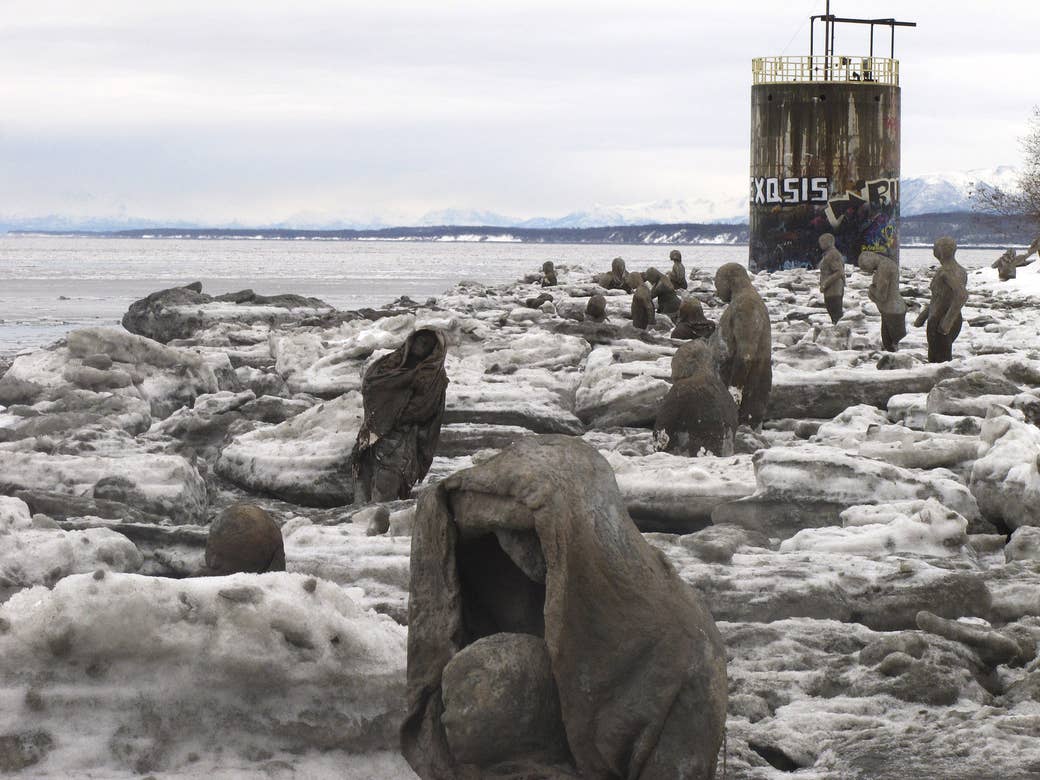
For years, artist Sarah Davies suffered the effects of undiagnosed fibromyalgia, a disorder that can mean musculoskeletal pain, mood issues, and amplified sensitivity to pain.
Not knowing what was wrong, she slipped into isolation.
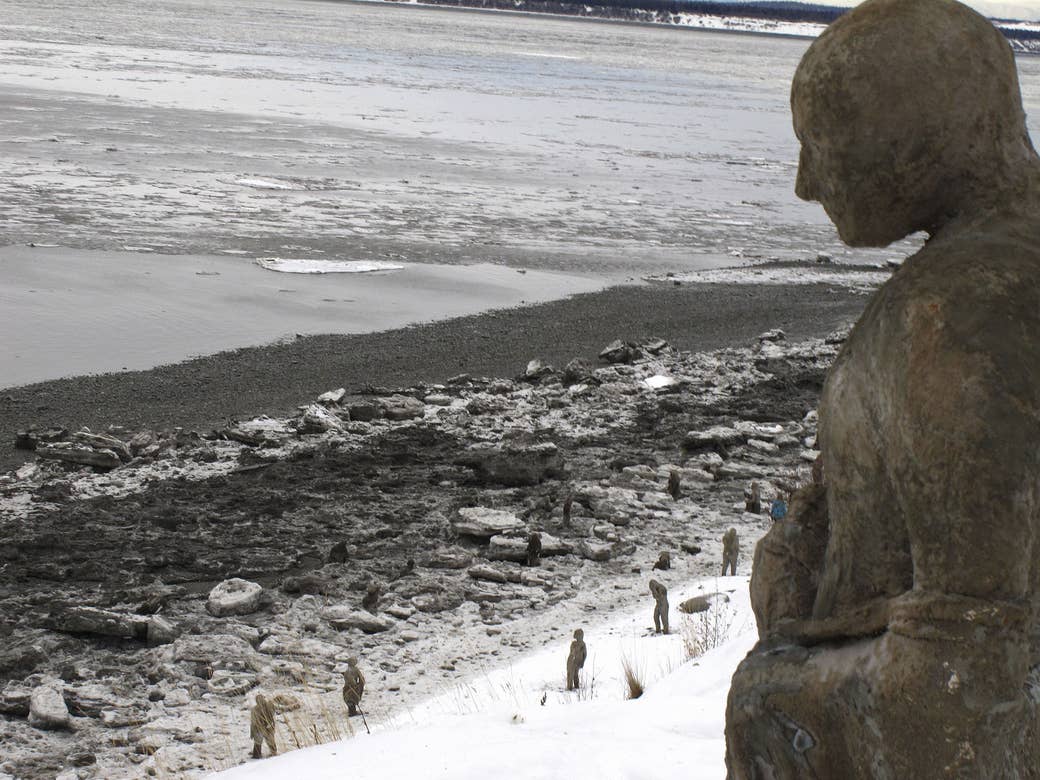
"I went through years of hiding, trying so hard to segregate my personal world from my professional world," Davies says in a video message for her upcoming sculpture project. "And then mine collided, and that was terrifying. And that was the day, that was the scariest for me. I believed that was my last day."
Davies' experience is what informs her art installation at Point Woronzof in Anchorage, Alaska.
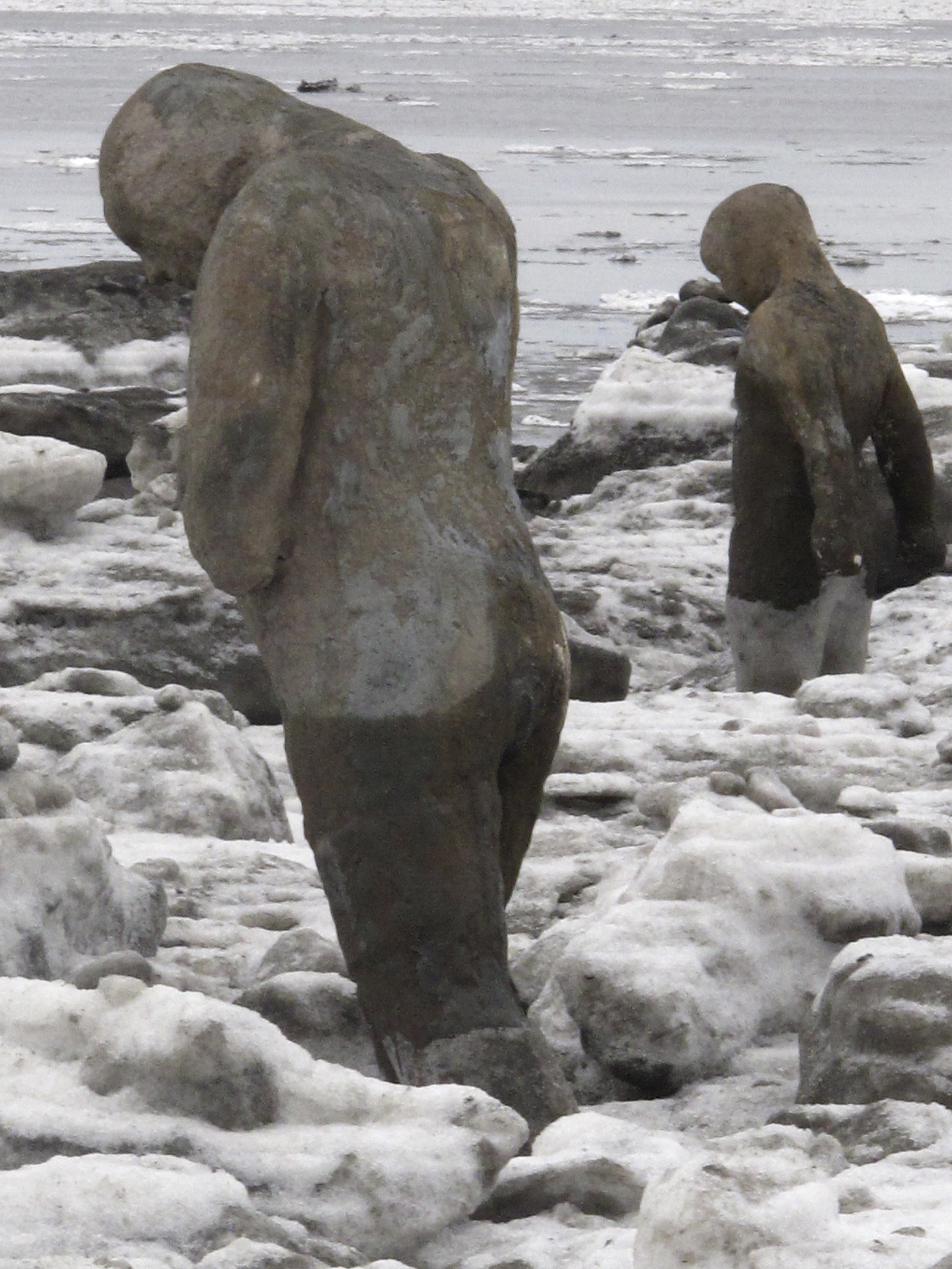
On Saturday, 85 sculptures made of straw, cement, and plaster molded around burlap-covered human models are slated to officially debut along the cold gray shoreline — a testament to others who have also pulled through a mental disorder or illness.
Organizers of the 100Stone project describe the weathered sculptures — which will eventually number 100 — as the "physical encapsulation of hundreds of unique experiences of vulnerability."
But organizers on Friday were racing to salvage the installation, which has taken a beating in harsh winter conditions.
Davies told the Associated Press that participants are reinstalling 69 of the 85 sculptures ahead of the official opening, which is still on. Most of the snow-dusted sculptures were toppled by winds.
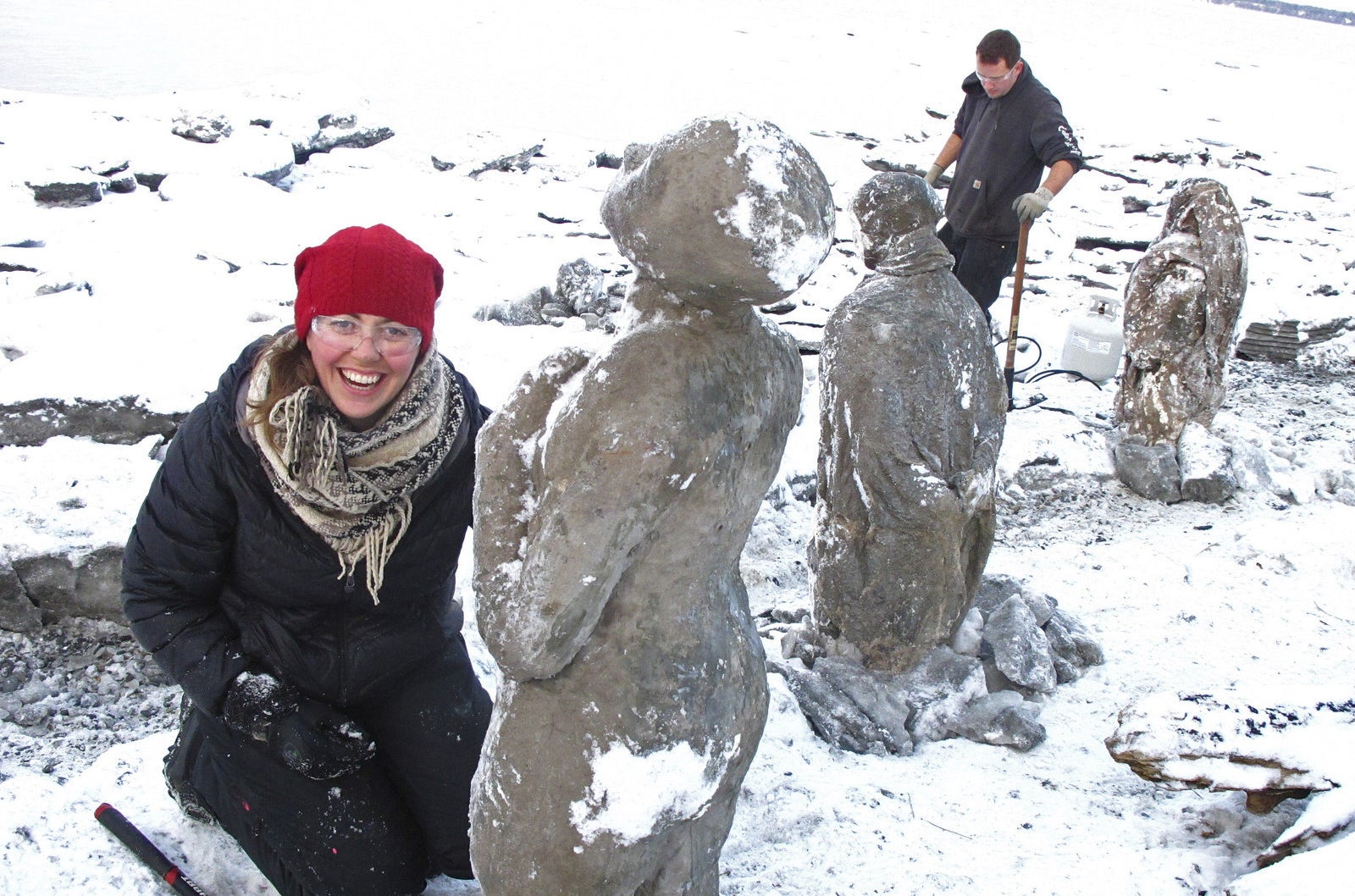
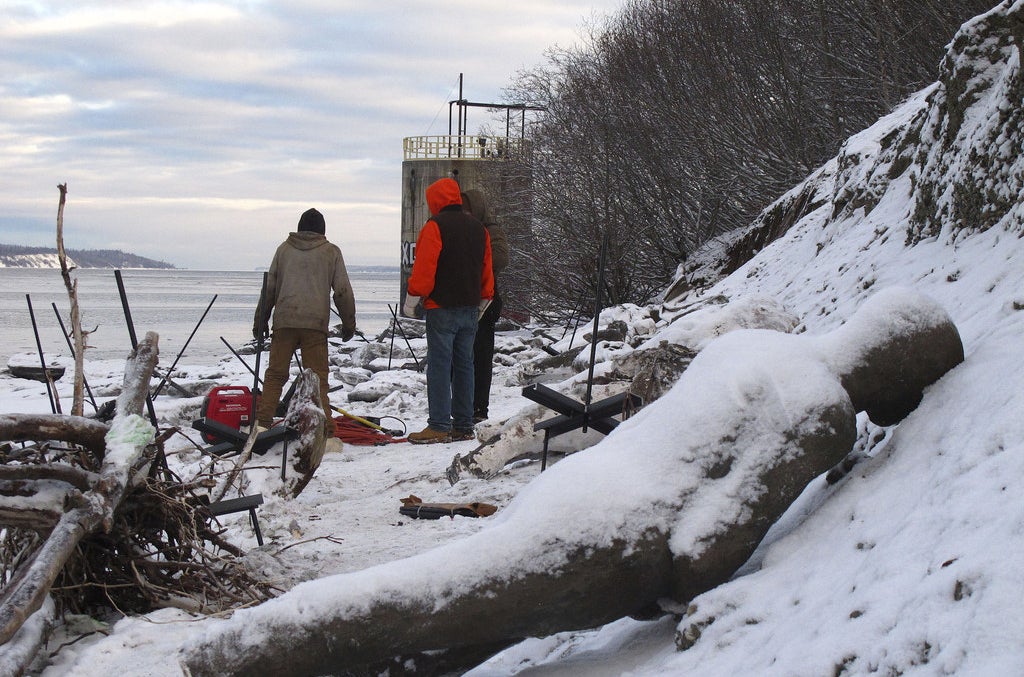
Lead project artist Sarah Davies poses by the sculptures.
100Stone organizers say the project will expose the public to stories of "resilience" over what can be for many, like Davies, a marathon of self-care.
The stories take root in a number of circumstances, including trauma, grief, chronic illness, mental disorders, and substance abuse.
For Davies, it wasn't until she started getting proper care for her diagnosis that she started "transforming my perception of myself.”
"I know what it fees like to hide, I know what it feels like to isolate," she said. "Something needs to change.”

